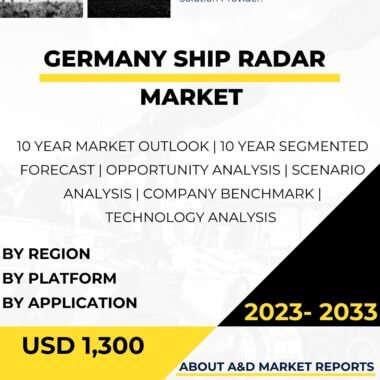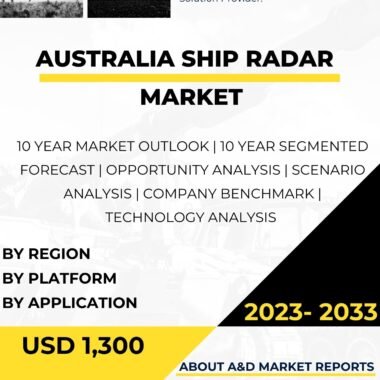Description
Canada Anti-Submarine Warfare Systems Market
Canada anti-submarine warfare systems Market play a crucial role in safeguarding the nation’s maritime interests and ensuring the security of its coastal waters and exclusive economic zone (EEZ). ASW systems are designed to detect, track, and neutralize enemy submarines, providing the Canadian Armed Forces with a formidable capability to counter underwater threats and maintain maritime domain awareness.
The vastness of Canada’s maritime territory, which includes extensive coastlines and large bodies of water, necessitates robust ASW capabilities to address potential submarine threats effectively. Submarines can operate stealthily underwater, making them challenging to detect using conventional means.
The Canadian Navy deploys a range of ASW systems across its fleet of surface ships, submarines, and maritime patrol aircraft to counter potential submarine threats effectively. These systems are equipped with advanced sensors, sonar technologies, and weapons to detect, track, and engage enemy submarines.
Surface ships are equipped with ASW sensors and sonar arrays that enable them to detect underwater sounds and track submarines. These sensors can be towed behind the ship to enhance their acoustic range and sensitivity. Additionally, surface ships are armed with anti-submarine torpedoes and depth charges to engage and neutralize enemy submarines.
Submarines in the Canadian Navy are also equipped with ASW capabilities, enabling them to detect and engage other submarines. These submarines deploy sonar systems and sophisticated sensors to identify potential threats and conduct defensive operations.
Maritime patrol aircraft, such as the CP-140 Aurora, are a vital asset in Canada’s ASW capabilities. These aircraft are equipped with advanced acoustic sensors and sonobuoys, which are dropped into the water to detect and track underwater sounds. The aircraft can cover large areas of the ocean, providing extended ASW coverage and supporting surface ships and submarines in submarine detection and tracking.
Additionally, maritime patrol aircraft are armed with anti-submarine torpedoes and depth charges, allowing them to engage enemy submarines if necessary.
Canada’s ASW systems benefit from ongoing research and development efforts to enhance their performance and effectiveness. The Canadian government collaborates with domestic and international defense industry partners to leverage advancements in technology and sensor capabilities.
These collaborations contribute to the continuous improvement of ASW systems, ensuring that Canada’s ASW capabilities remain at the forefront of technology and aligned with international best practices.
Moreover, the Canadian Armed Forces conduct regular ASW exercises and training to maintain operational readiness and proficiency in ASW operations. These exercises include simulated submarine attacks, underwater tracking, and coordination between naval vessels, submarines, and maritime patrol aircraft.
Canada’s ASW systems are also interoperable with those of its allies, enabling joint ASW operations and enhancing maritime security in multinational environments.
The Canadian Navy’s ASW capabilities are further strengthened through participation in international ASW exercises and operations. These exercises enable the Canadian Armed Forces to collaborate with other navies and gain valuable experience in anti-submarine warfare tactics and techniques.
Canada’s participation in multinational ASW operations contributes to regional security and supports Canada’s commitments to international defense alliances and security initiatives.
Moreover, Canada’s ASW capabilities are closely aligned with its broader defense and security strategies. The deployment of ASW systems contributes to maritime domain awareness, enabling the Canadian Armed Forces to monitor and assess maritime activities within its territorial waters and EEZ.
ASW systems are integral to Canada’s coastal defense efforts, providing a critical layer of protection against potential submarine incursions.
Canada’s strategic location in the North Atlantic and North Pacific Oceans places it in proximity to critical maritime trade routes and international waters. This proximity necessitates robust ASW capabilities to safeguard Canada’s maritime interests and contribute to regional stability.
Furthermore, Canada’s ASW systems are subject to strict adherence to international laws and treaties governing naval operations and arms control. The Canadian government maintains a comprehensive approach to export control and technology transfer, ensuring that ASW systems are only used for legitimate defense purposes and do not proliferate to unauthorized entities.
In conclusion, Canada’s anti-submarine warfare systems are a fundamental component of the country’s maritime defense and security efforts. Deployed across surface ships, submarines, and maritime patrol aircraft, these systems enable the Canadian Navy to detect, track, and neutralize potential submarine threats effectively.
Canada’s strategic location, vast maritime territory, and commitment to international defense cooperation highlight the importance of robust ASW capabilities.
Ongoing research and development, collaboration with domestic and international defense industry partners, and participation in multinational ASW exercises contribute to the continuous improvement and adaptability of Canada’s ASW systems.
By maintaining a high level of operational readiness and adhering to international legal frameworks, Canada’s ASW capabilities ensure that the nation can address potential submarine threats, protect its coastal waters and EEZ, and contribute to regional and international maritime security efforts.




